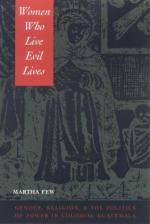|
This section contains 3,333 words (approx. 12 pages at 300 words per page) |

|
The extant documents produced by members of the faith and the nontextual materials influenced by Zoroastrian beliefs substantially represent religious manifestations of male discourses. Those writings and items helped contour feminine parameters within a society that was largely patriarchal. Yet, if the present is any guide to the past, religious issues must have been viewed and interpreted differently by members of each gender. Likewise, ritual acts must also have been practiced differentially by members of each gender because some female-specific rites still persist despite lack of sanction by the magi or male clergy who oversee most canonical ceremonies.
History of the Study
When gender issues were initially addressed in scholarly studies of Zoroastrianism, a picture quite different to societal realities was generated. Zoroastrianism was depicted as a faith embodying many Enlightenment and Protestant values, whose male and female followers had long been equal. The...
|
This section contains 3,333 words (approx. 12 pages at 300 words per page) |

|




